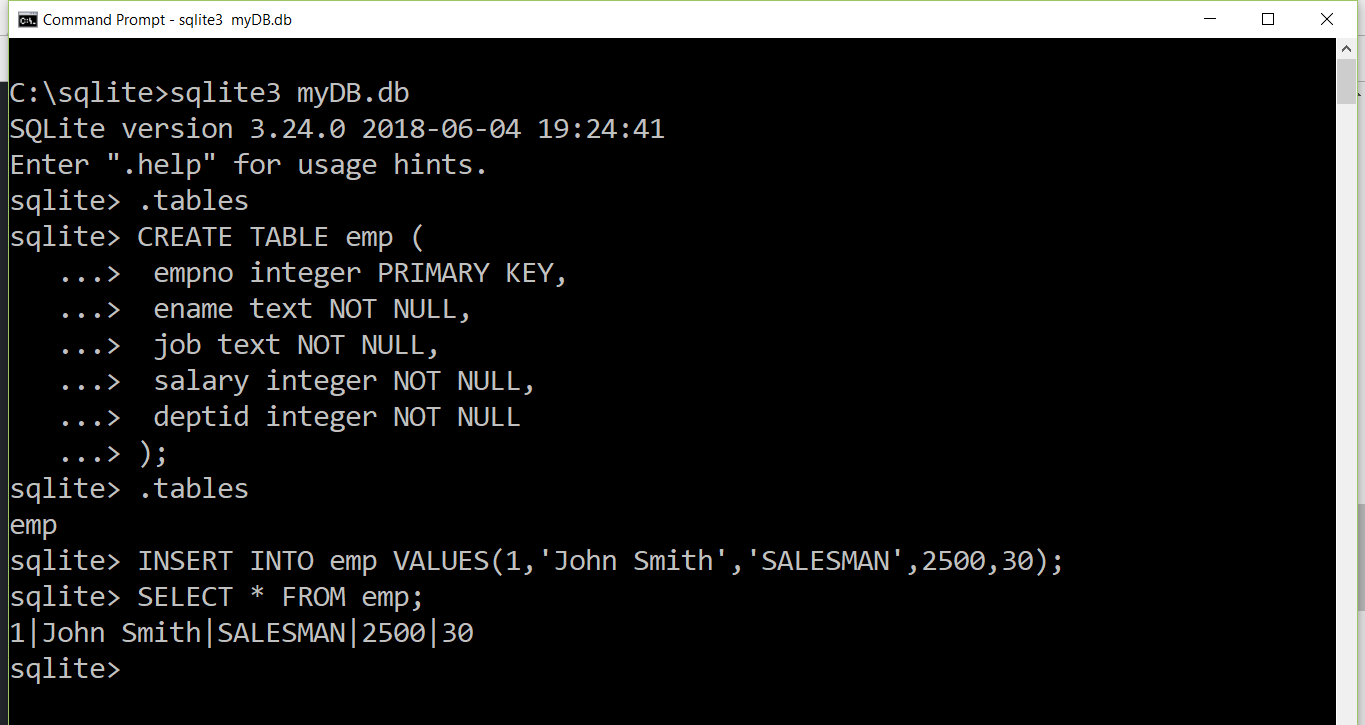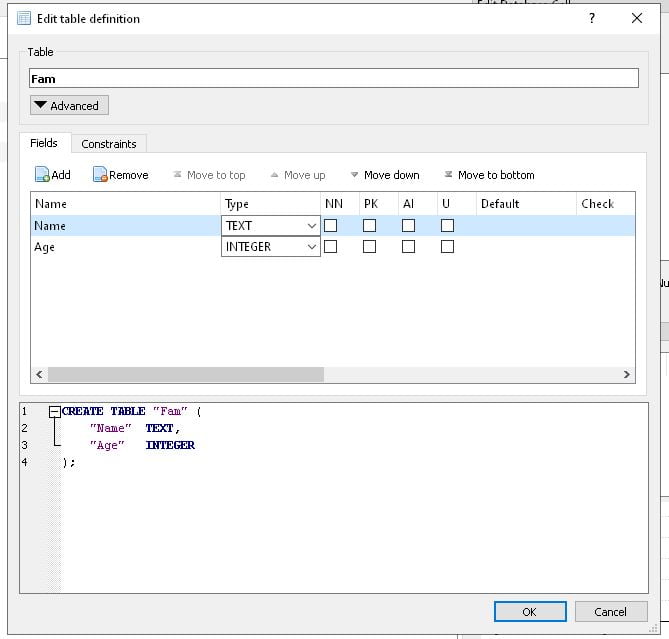

#Db browser for sqlite list tables tv#
I have a file, shows.csv with some of the TV Shows that I love. > spark.sql('show databases').show() +-+ |databaseName| +-+ | default| | freblogg| +-+ > spark.sql('create database freblogg')Īnd now, listing databases will show the new database as well. There is no equivalent catalog API for this. We can see this with currentDatabase > () 'default' When you start a Spark application, default is the database Spark uses. There can be tables created in the global database too. > spark.sql('show databases').show() +-+ |databaseName| +-+ | default| +-+Īpart from the ‘default’ database, there is also a global database global_temp which is not listed here. We can also use Spark SQL to get the same information. We can see the list of available databases with listDatabases: > () Īs we have not created any new databases, we only see the default database in the list. If we don’t specify any database, Spark uses the default database.

So, We need to first talk about Databases before going to Tables. That is all! If you start the application now, you will see the data loaded in the control.Tables exist in Spark inside a database.

In that method, we call the method of the class and pass the collection to it. Finally, we define the method, which will be called on the event of the page. This allows us to bind the attribute of the control to the property of the page. We use the constructor to initialize the collection and set the DataContext property of the page to the instance of the page. Private async void Page_Loaded(object sender, RoutedEventArgs e)Īwait DatabaseConnector.LoadRecordsAsync(Items) Var descriptionOrdinal = reader.GetOrdinal("Description") Var nameOrdinal = reader.GetOrdinal("Name") Using(var reader = await command.ExecuteReaderAsync()) SQLiteCommand command = new SQLiteCommand("SELECT * FROM Data", connection) Using(SQLiteConnection connection = new SQLiteConnection("Data Source=Assets/uwp.db Version=3")) Public static async Task LoadRecordsAsync(ObservableCollection items) Open the DatabaseConnector.cs file and replace its content with the following code: using ĭouble-click on the project name in the and select. In the right-click on the node and select. For that, however, we first need to add an SQLite package to our project. Now, we are going to create a routine for loading records from the database. Additionally, we defined a handler for the event that we will use to load the records from the database. Finally, we defined two elements and bound their attributes to the and properties of the class. That allows us proper binding to the class properties. We set the value of the attribute of the to, which is the name of the container class we have just created. We bound the attribute to property, which we will define later in the file. In the code, we added a new control with the name. Replace the content of the file with the following XAML code: In the double-click on the file to open it. Next, we are going to add a ListView control to the main page and define how the content of each item should be shown. Next, in the, double-click on the file to open it and replace the content of the file with the following code: namespace ListViewSQLiteĪs you can see, the class has two string properties and mimicking the structure of the database’s table.


 0 kommentar(er)
0 kommentar(er)
